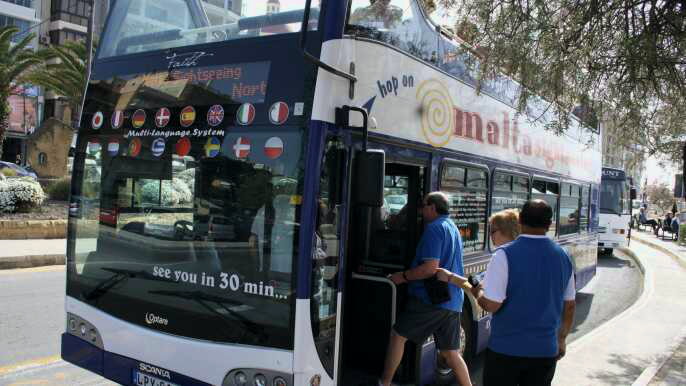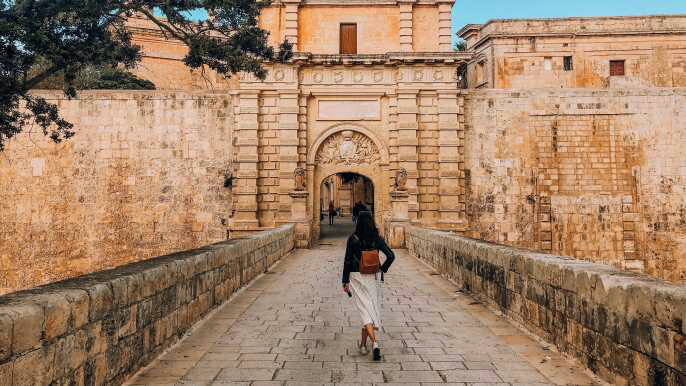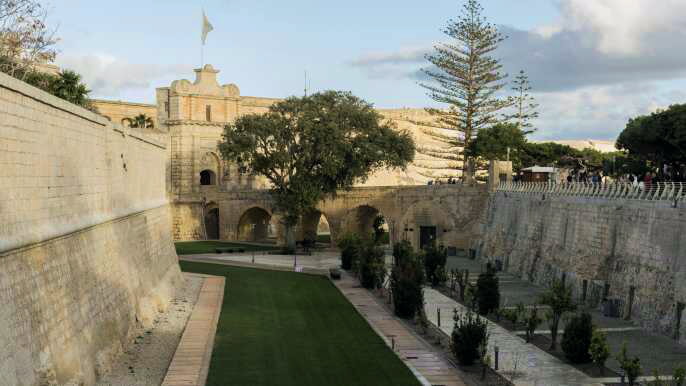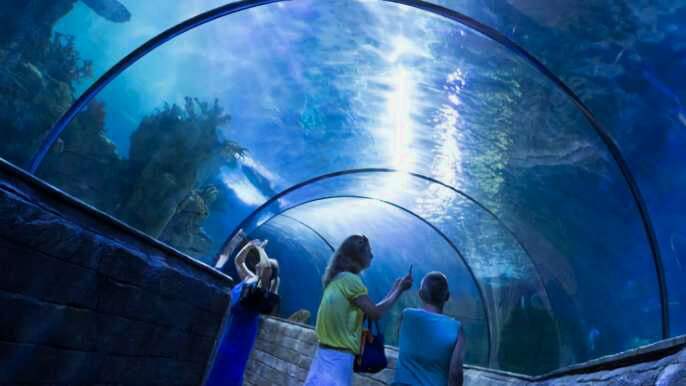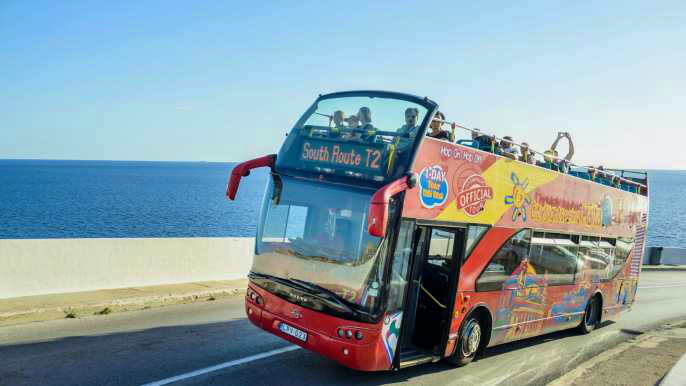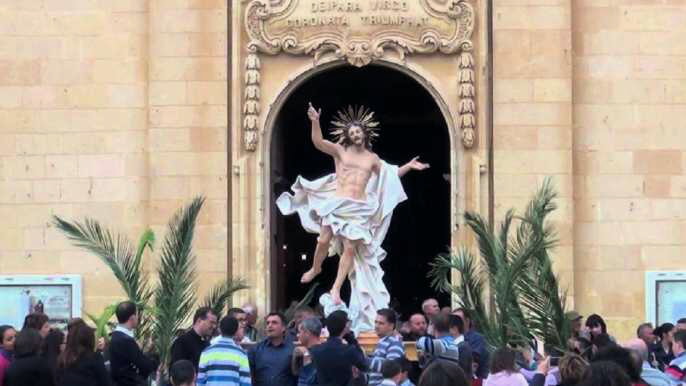Located between the North African coast and Sicily, Malta is an archipelago in the central Mediterranean. The islands are dotted with fortresses and historic sites. It is also home to numerous megalithic temples. There is even a subterranean complex of halls called the al Saflieni Hypogeum. It is believed to be over 4000 years old.
St. John's Bastion
Located on the land front of Valletta, the asymmetrical Bastion of Saint John was built by the Order of Saint John in the mid 1560s. It was financed by Pope Pius V. The Bastion is one of four important strongholds in Valletta.
The city of Valletta, which is a UNESCO World Heritage Site, is full of historic buildings, majestic churches and dreamy gardens. The city is surrounded by ancient fortifications and bastions. These fortifications are still in use.
Valletta's main street is Republic Street. The city is also home to a rich collection of art, from paintings to sculptures. There are also several beautiful gardens, including Hastings Terrace and Upper Barrakka Gardens.
St John's Co-Cathedral is the oldest church in Valletta. It's home to world famous art by Caravaggio and Mattia Preti. It's also the site of a replica of a German bomb that fell through the dome during WWII. The dome's 220-foot high dome features marble floors and intricate gold and blue details.
One of the three main bastion gates is the Door Gate. It's located in the western part of the bastion. It's probably erected according to the drawings of French engineer Charles F. de Mondion. The Bastion's inner area has walls and yards. The inner flank of the bastion is decorated with bas-relief.
One of the most important bastions in Valletta is the Bastion of Saint John. The city is surrounded by other fortifications, including Saint James Cavalier and Saint Peter and Paul Bastion. The inner and outer sections of the Bastion offer excellent views of the Grand Harbour.
Grandmaster's Palace
Located in the heart of Valletta, the Grandmaster's Palace is one of the most beautiful places to visit in Malta. Built during the 16th and 18th centuries, it served as the residence of the Knights of St John and was the seat of power in Malta. Since the mid-18th century, the building has been enlarged and embellished by successive Grand Masters.
A bronze statue of Neptune is in the lower courtyard. This statue was originally the crowning monument for the Marina fountain. Gaspard le Marchant ordered that the statue be moved to the lower courtyard. The statue is also inscribed with a letter from King George VI.
The upper part of the hall contains wall paintings of events from the Great Siege of Malta in 1565. The upper part of the hall has a coffered ceiling. It is also decorated with lunettes that show scenes from Malta's past.
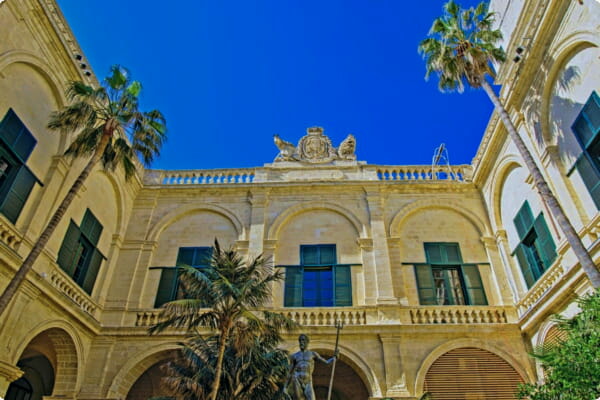
The Palace Armoury is one of the largest collections of arms in the world. The collection features weapons from the 15th to the 18th centuries. The museum also provides an opportunity for visitors to feel the weight of helmets and armor.
The Grandmaster's Palace also has the official Office of the President of Malta. This is where the President of Malta meets with foreign dignitaries. This room is also used for exhibitions and state functions.
The palace also features a Minstrels' Gallery. This was originally in a private chapel of the Grand Master. Its original coffered ceiling has been restored.
St. Peter's Pool
Located in the village of Marsaxlokk, St Peter's Pool is a natural swimming pool surrounded by rocks. It is a small alcove with clear blue waters and interesting rock formations. It is also a popular snorkeling site.
This natural pool is one of the best swimming spots in the Maltese Islands. The water is crystal clear and is very safe to swim in. The pool is a natural inlet that is surrounded by limestone rocks. It is located near the tip of Delimara Point. It is a great place to go for a picnic or to swim in. It is not a sandy beach, but is still a nice location for a picnic.
You can reach St Peter's Pool by car or by foot. It is about a 35-minute walk from Marsaxlokk. The road to the pool isn't a smooth one and can be a bit tricky, especially in the summer.
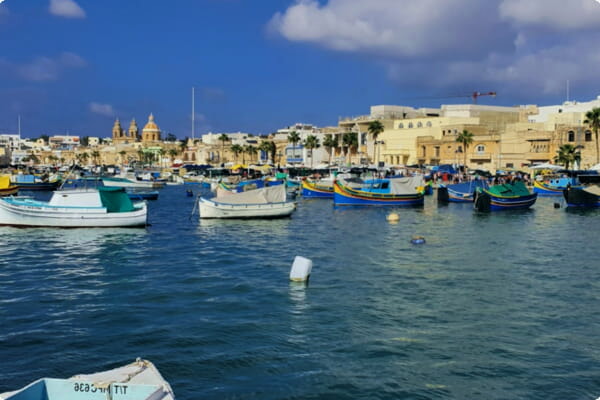
The best time to go to St Peter's Pool is in the morning or early afternoon. This will give you time to enjoy the scenery while you cool off in the water. There isn't any shade to be had, so bring your sunscreen. The sun will make the water glow a bright azure.
To get to the pool, you'll need to descend a series of stone stairs. These are carved into the rocks. If you're driving, you can park your car in the paid parking area a few hundred metres away.
Blue Grotto
Located on the southern coastline of Malta, Blue Grotto is one of the most popular tourist attractions in Malta. The grotto is a network of caves and sea caverns. This natural wonder is found in the fishing village of Wied iz-Zurrieq.
A Blue Grotto tour is a great way to explore the natural wonder of this island. Boat trips are available all year round. These trips provide visitors with a different view of the caves and rock formations.
To get to Blue Grotto, travelers can take a bus or a rental car. Getting there requires a short drive from Valletta. For those who prefer public transportation, there are buses that leave from the Panorama bus stop. The Panorama bus stop is located right at the entrance to Blue Grotto.
Visitors can also take a boat trip to Blue Grotto. Boat trips depart from the harbour village of Wied iz-Zurrieq. These trips include stops at the Hagar Qim Temples and Marsaxlokk Market.
Blue Grotto is a unique cave that can be explored by divers. Its waters are clear and crystalline. The cave is made up of a series of channels and cracks that descend to a depth of about 30 meters. These parts of the cave are also suitable for relaxing.
When visiting Blue Grotto, it is best to visit in the summer. This is the time when the water is the clearest. It is also the time when more fish are swimming around.
St. Paul's Bay
Located on the northeast coast of Malta, St Paul's Bay is one of the best places to visit in Malta. This coastal town is made up of several neighbouring villages, including Qawra and Bugibba. The area is not as popular as other destinations in Malta, but it offers plenty of things to do.
The Apostle Saint Paul's Grotto, which sits in a beautiful bay in Malta, is another must see. You can visit it on a tour with an expert guide who will explain the history of the Apostle Saint Paul.
Another great place to see is the Malta National Aquarium, which has underwater replicas of the WWII-era HMS Stubborn submarine. It is a popular family attraction.
For those looking for an off-the-beaten-path vacation, there is a resort in Xemxija. This is an ancient Roman settlement and is worth a visit.
Malta's archipelago has many cultures and cultures have influenced the country's history. The fishing village of Marsaxlokk, for example, was used by the Phoenicians during The Great Siege of Malta.
You can see Malta's history by visiting the Wignacourt Tower, which dates back to 1610. It is the oldest surviving coastal defense post in Malta. This tower overlooks St. Paul's Bay, and is home to a small military museum. The volunteers are very knowledgeable, and are eager to share their stories.
If you're looking for a fun activity, you can go cliff diving in the bay. The water is clear, warm, and great for snorkeling.
Mdina
Located near the center of Malta, Mdina is a beautiful walled city with interesting architecture. It has a long history dating back to the Phoenicians around 700BC. It was later inhabited by Arabs and Normans around the turn of the 11th century.
One of the most iconic buildings in Mdina is the Cathedral. This church is a 12th century building, and was rebuilt after an earthquake in the late 17th century. The church features beautiful frescoes and marble columns. There is also a Museum inside the Cathedral, which contains religious artworks.
The Mdina Experience is a half-hour tour that takes visitors through the history of Mdina. This includes the main attractions in Mdina, as well as important sites in the area.
The best way to explore Mdina is by foot. It's like walking through a time warp. The city's ancient ramparts rise from the surrounding countryside. The walls offer incredible views of Malta.
The Roman Villa is another unique attraction in Mdina. The villa is a former dwelling of the Romans. It contains mosaics, ruins of an ancient dwelling, and a collection of Roman antiquities. It is a very popular destination for visitors.
Fontanella Tea Garden is a popular coffee shop in Mdina. It is located on top of the Bastion Square. The cafe offers coffee and homemade desserts. It also features panoramic views of Mdina.
Mdina is not a big city, and it is best explored by foot. It is very peaceful at night.


